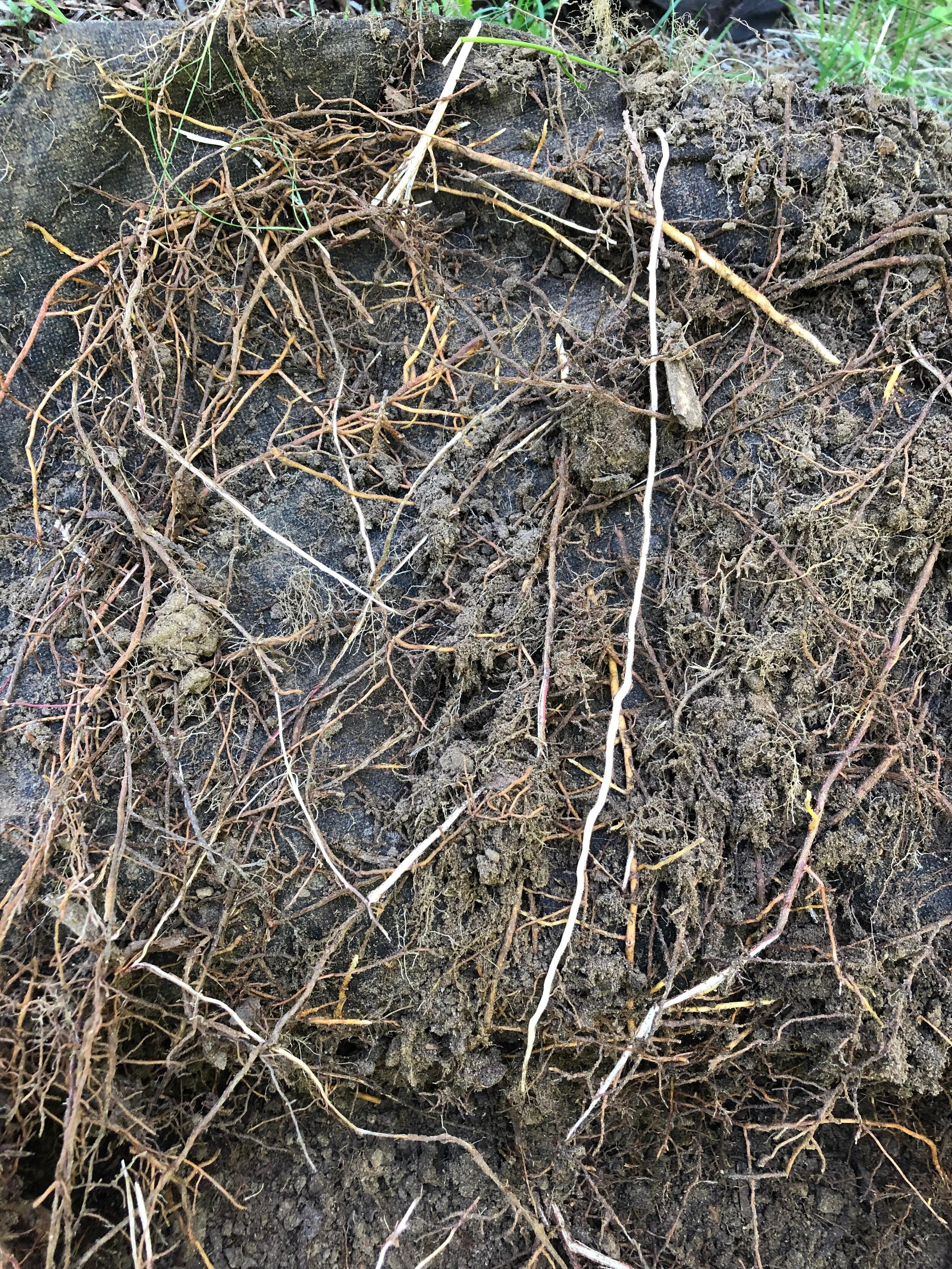When Your Weed Mat Becomes a Mat of Weeds
By Emily Macduff
The appeal of weed mats or landscaping fabric is undeniable. Who wouldn’t want a ‘weed-resistant’ barrier between your soil and mulch layers? The reality is a little less rosy. And over time, weed fabric cannot stand a chance against the power of nature.
The Promise
Retailers promise that weed fabric, primarily made from woven polypropylene, can be inexpensively installed to suppress weeds for as long as 20 years! The old adage ‘if it sounds too good to be true, it probably is’ rings true.
The Reality: Common Weed Mat Problems
At DG, we often meet new clients with well-established but weedy gardens in need of an overhaul. Where mat has been installed, we often find the weeds have densely intertwined their roots in the fabric. Remember: weeds are weeds because they are aggressive and adaptable. In the presence of a weed mat, they can use the woven plastic as a highway to spread further around the bed.
Planting: Planting new perennials in a bed with landscape fabric poses other problems. Digging and cutting some fabric years after its been installed can be difficult verging on impossible. The planting shown below was a struggle since there were areas where thick old weed mat existed up to 6 inches below the soil.
Plant Health: Long-established mats can inhibit or entwine with tree roots systems over time.
In serious cases like this you cannot expect to remove the weeds without also removing the fabric – often disturbing and exposing the remaining soil, which will then require compost and mulch.
Environmental Impacts
Weed mat products claim to allow water and air to permeate while reducing evaporation. However, in reality the artificial barrier can pack the soil beneath it and leave plants waterlogged and lacking oxygen. Weed barriers also interrupt the natural mixing of natural mulches (leaves; grass clippings) and essential microorganism among the soil, leading to depleted and nutrient-starved soil that is unwelcoming to most plants except – you guessed it – weeds.
Alternatives
So, what’s the alternative you ask? Skip the landscaping fabric altogether. If you’re installing a new bed, make sure you are planting in quality soil and mulch and stay on top of your weeding and cultivating, because either with or without fabric, you’ll need to weed!
If you’re installing a new bed, consider dense plantings of groundcovers as a ‘green mulch’ option. We love perennial geranium and barren strawberry, for example. The bed pictured below only has the occasional weed and it was only planted two seasons before the photo was taken!






